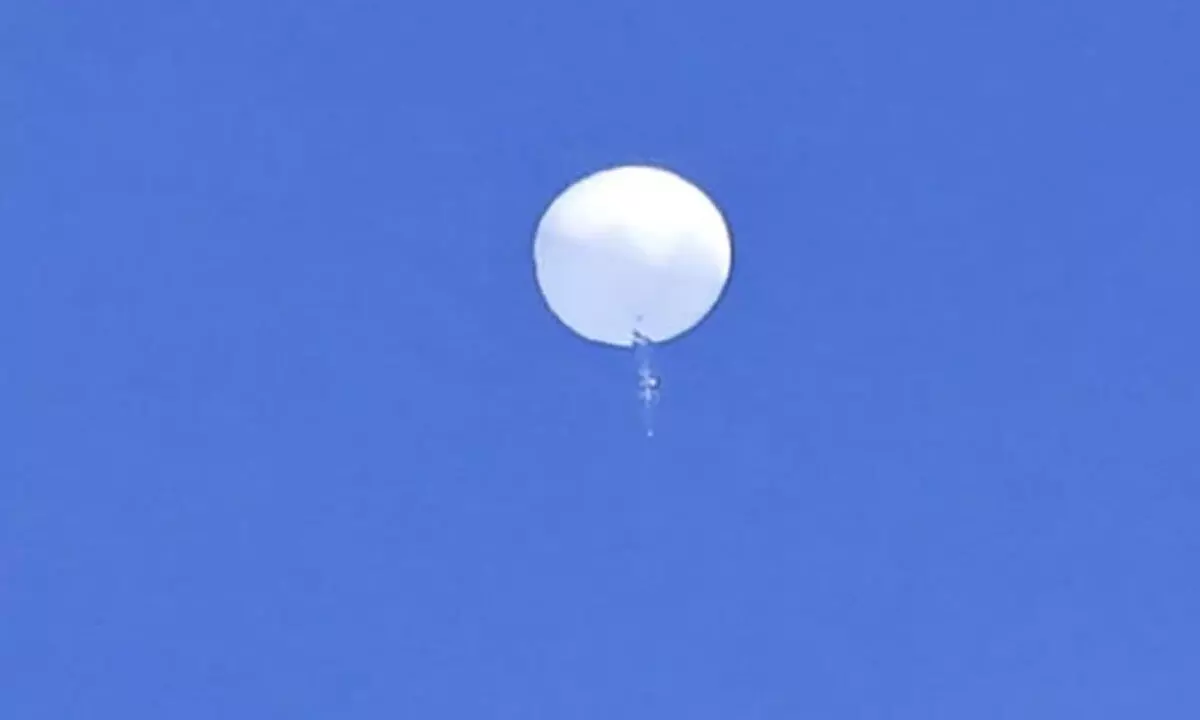Live
- 525 candidates remain in fray for 17 LS seats in Telangana
- Political Prowess on Display: Rajnath Singh and Smriti Irani's nominations galvanise BJP’s poll campaign
- TN government committee identifies 42 elephant corridors in state
- Ola Cabs CEO Hemant Bakshi steps down, firm announces job cuts
- IPL 2024: Kuldeep Yadav's 35 not out propels Delhi to 153/9 against Kolkata
- BJP leader Sambit Patra files nomination for Puri Lok Sabha seat
- Rajiv Pratap Rudy accuses Lalu Prasad of 'killing' developmental schemes in Saran
- Quick action by Telangana Cyber Security Bureau saves citizen's Rs 1 crore
- Types of food diabetics should avoid
- Celebrating National Honesty Day: 20 Quotes to Inspire Integrity
Just In
Visakhapatnam: Spy balloons, a new threat to national security


Representational image
- Instrumentation used for spy and weather balloons totally differs from one another
- Ground based anti-air weapons will not hit targets that are high in the air
- Stealth materials will reflect radar signals differently
Visakhapatnam: After the shooting down of a Chinese surveillance balloon off America's east coast by the US Military last month, new threats like spy balloons garner renewed attention among various quarters.
Emphasising that there is a need to devise strategies, weapons, platforms to deal with spy balloon threats, former Director General of DRDO and former ISRO Chair Professor at National Institute of Advanced Studies (NIAS), Indian Institute of Science Vepakomma Bhujanga Rao shares with The Hans India that the use of spy balloons in China in the 21st century turns out to be astonishing.
In 1950, during the cold war, spy balloons were deployed and no longer considered as the most recent spying technique. These days, such data are covertly collected using geosynchronous and low-earth orbit satellites. The one seen in American space was at a height of 20-km or the start of the stratospheric area. Even at such heights, spy balloons can easily be found when watched continuously, Bhujanga Rao says.
A year ago, Bhujanga Rao recalls, Indian Forces spotted a similar balloon over the Andaman. "But it eventually drifted away. These developments prompted discussions for some rethinking with regard to the strategies to deal with new threats like spy balloons," the former DG of DRDO explains.
Even as China claims that they were weather balloons that strayed around, Bhujanga Rao denied its possibility. "The fact that balloons can remain in one place for an extended period of time during monitoring gives an edge over detailed observation with high resolution cameras. However, spy balloons are not easy to shoot down. Ground based anti-air weapons will not hit targets that are high in the air. From the ground, the sprayed bullets may result in casualties or injuries. So, only a select few fighter jets can go to a height of 20-km and deploy an air-to-air missile. It is quite a pricey procedure," elaborates Bhujanga Rao.
About detection of spy balloons, Bhujanga Rao says stealth materials used will reflect radar signals differently and it would be difficult for detection. "Once detected, it is easy to track the movement. Laser weapons can be used to blind all optical sensors and make the mission ineffective," observes the former DG of DRDO.
Explaining the difference between spy and weather balloons, Bhujanga Rao says, the instrumentation used for both purposes is totally different. According to him, high-resolution cameras or electromagnetic signal detectors, night vision cameras or multi spectral sensors on a weather balloon can be used for surveillance purposes alone.
Reports reveal that the US has an advanced spy balloon programme with smart sensors to monitor the sky closely for surveillance of the drug trade and smuggling networks.

© 2024 Hyderabad Media House Limited/The Hans India. All rights reserved. Powered by hocalwire.com






